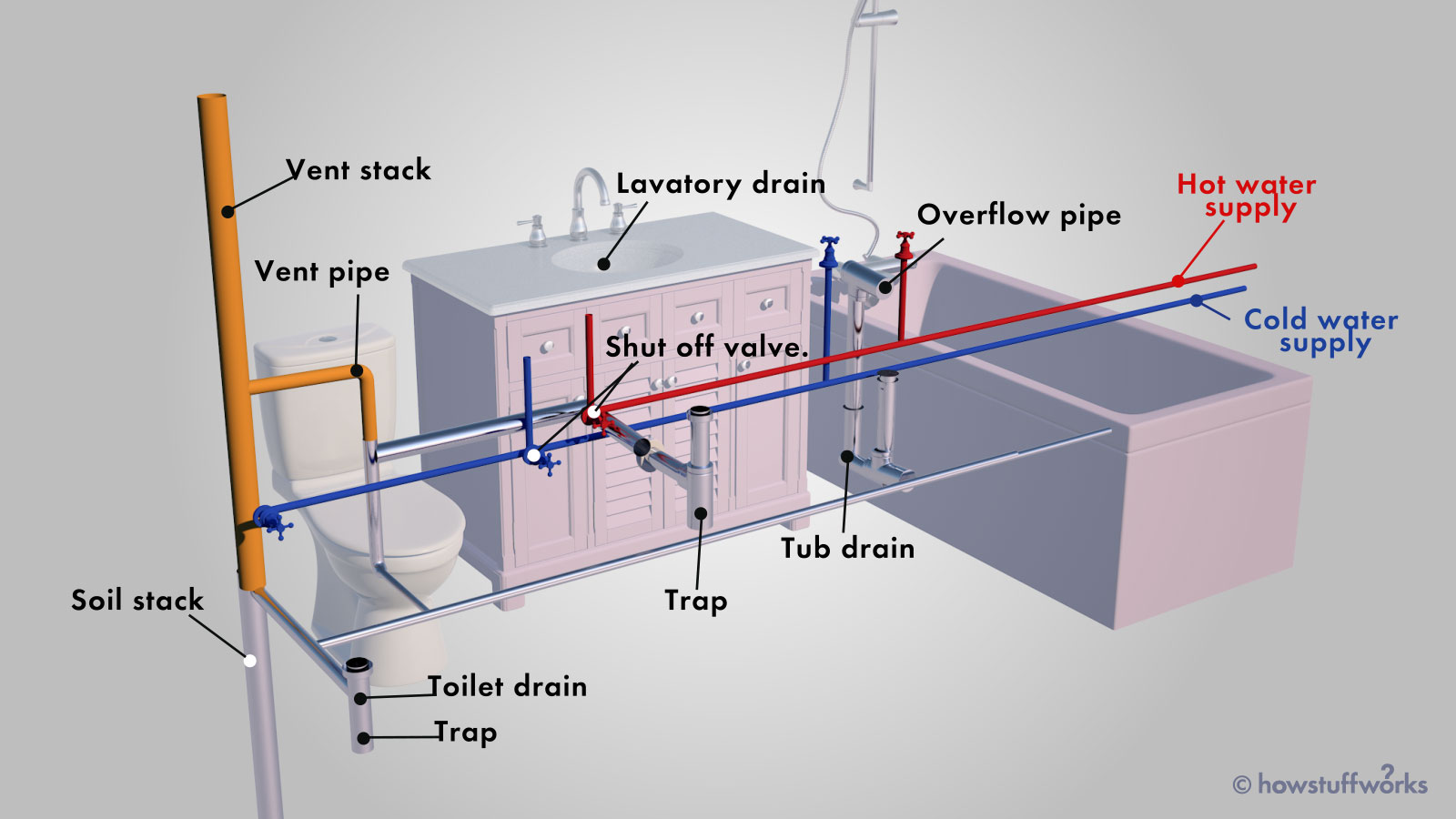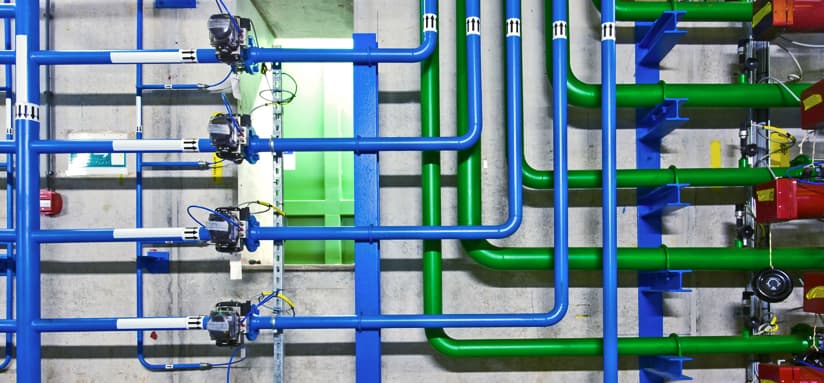Examining Your House's Plumbing System Anatomy
Examining Your House's Plumbing System Anatomy
Blog Article
Are you currently trying to find tips about Anatomy of a House: Understanding the Components?

Comprehending just how your home's plumbing system works is important for every property owner. From delivering clean water for alcohol consumption, cooking, and bathing to securely getting rid of wastewater, a properly maintained pipes system is vital for your family members's wellness and convenience. In this detailed overview, we'll explore the elaborate network that makes up your home's plumbing and offer pointers on upkeep, upgrades, and managing typical issues.
Intro
Your home's plumbing system is greater than just a network of pipes; it's an intricate system that guarantees you have access to clean water and efficient wastewater elimination. Recognizing its elements and how they work together can assist you prevent expensive repair work and make certain whatever runs efficiently.
Fundamental Elements of a Plumbing System
Pipes and Tubes
At the heart of your plumbing system are the pipes and tubes that carry water throughout your home. These can be made from various materials such as copper, PVC, or PEX, each with its benefits in regards to toughness and cost-effectiveness.
Fixtures: Sinks, Toilets, Showers, etc.
Components like sinks, commodes, showers, and bathtubs are where water is utilized in your house. Understanding just how these fixtures link to the plumbing system assists in detecting problems and preparing upgrades.
Shutoffs and Shut-off Points
Shutoffs control the circulation of water in your pipes system. Shut-off valves are essential during emergencies or when you require to make repair work, enabling you to separate parts of the system without interfering with water circulation to the whole residence.
Water System System
Main Water Line
The primary water line links your home to the local water supply or an exclusive well. It's where water enters your home and is distributed to different components.
Water Meter and Pressure Regulator
The water meter measures your water use, while a stress regulator makes certain that water flows at a secure pressure throughout your home's pipes system, protecting against damage to pipes and fixtures.
Cold Water vs. Hot Water Lines
Comprehending the difference in between cold water lines, which supply water straight from the main, and hot water lines, which bring warmed water from the water heater, assists in repairing and planning for upgrades.
Drainage System
Drain Pipes Pipeline and Traps
Drain pipelines lug wastewater away from sinks, showers, and toilets to the drain or septic system. Catches prevent drain gases from entering your home and additionally catch particles that could cause blockages.
Ventilation Pipes
Ventilation pipelines permit air right into the water drainage system, preventing suction that might slow down drain and trigger traps to empty. Proper ventilation is crucial for keeping the honesty of your pipes system.
Relevance of Correct Drain
Making sure appropriate water drainage protects against back-ups and water damages. On a regular basis cleaning up drains and maintaining catches can protect against costly repair work and extend the life of your plumbing system.
Water Heating System
Types of Hot Water Heater
Water heaters can be tankless or standard tank-style. Tankless heating units warm water on demand, while storage tanks store warmed water for immediate use.
Just How Water Heaters Attach to the Pipes System
Recognizing just how hot water heater link to both the cold water supply and hot water distribution lines aids in detecting problems like insufficient hot water or leakages.
Upkeep Tips for Water Heaters
Frequently purging your water heater to remove sediment, examining the temperature level settings, and examining for leaks can extend its lifespan and boost power effectiveness.
Common Pipes Issues
Leakages and Their Reasons
Leaks can take place as a result of aging pipelines, loosened fittings, or high water pressure. Addressing leakages quickly avoids water damage and mold and mildew development.
Clogs and Clogs
Blockages in drains and commodes are often caused by flushing non-flushable items or a build-up of grease and hair. Making use of drainpipe screens and bearing in mind what goes down your drains pipes can prevent blockages.
Signs of Plumbing Troubles to Look For
Low tide pressure, sluggish drains pipes, foul odors, or unusually high water expenses are indicators of possible plumbing issues that need to be dealt with immediately.
Pipes Maintenance Tips
Normal Inspections and Checks
Arrange yearly plumbing evaluations to capture concerns early. Look for indicators of leaks, corrosion, or mineral accumulation in taps and showerheads.
DIY Maintenance Tasks
Basic tasks like cleaning faucet aerators, looking for commode leaks using dye tablet computers, or protecting revealed pipes in cold climates can stop significant pipes issues.
When to Call an Expert Plumbing Professional
Know when a plumbing issue needs expert expertise. Attempting complex repair services without proper knowledge can cause even more damages and higher repair work costs.
Upgrading Your Plumbing System
Factors for Updating
Updating to water-efficient components or changing old pipelines can improve water quality, minimize water expenses, and enhance the value of your home.
Modern Pipes Technologies and Their Benefits
Explore innovations like wise leakage detectors, water-saving commodes, and energy-efficient hot water heater that can save money and decrease environmental effect.
Expense Factors To Consider and ROI
Calculate the upfront expenses versus long-lasting cost savings when taking into consideration pipes upgrades. Lots of upgrades pay for themselves through reduced utility bills and less repairs.
Environmental Influence and Preservation
Water-Saving Components and Devices
Mounting low-flow taps, showerheads, and commodes can dramatically reduce water usage without giving up efficiency.
Tips for Lowering Water Use
Basic routines like taking care of leakages promptly, taking shorter showers, and running full loads of laundry and meals can preserve water and reduced your utility bills.
Eco-Friendly Plumbing Options
Consider lasting pipes products like bamboo for floor covering, which is durable and eco-friendly, or recycled glass for countertops.
Emergency situation Readiness
Steps to Take During a Pipes Emergency
Know where your shut-off valves are located and how to turn off the water supply in case of a ruptured pipeline or significant leak.
Significance of Having Emergency Calls Helpful
Keep contact details for local plumbings or emergency solutions easily available for fast reaction during a pipes situation.
DIY Emergency Fixes (When Relevant).
Short-lived repairs like making use of air duct tape to patch a dripping pipe or positioning a container under a dripping faucet can lessen damage until an expert plumber gets here.
Final thought.
Recognizing the makeup of your home's plumbing system encourages you to preserve it successfully, saving time and money on repair services. By following normal maintenance routines and remaining informed regarding contemporary pipes technologies, you can guarantee your pipes system operates successfully for years ahead.
HOW YOUR PLUMBING SYSTEM WORKS
Which Pipes Do What?
Blue lines = fresh water supply entering the building
Red lines = hot water supply entering the building
Grey lines = pipes carrying waste away from the building and venting pipes carrying gases away from the building (through the roof)
YOUR MAIN PLUMBING SYSTEMS
There are two main plumbing systems that support your home s basic plumbing needs one that brings clean water into your home, and one that sends dirty water away from your home. Connected to the toilet, bath, shower, and other faucets in your home, these two systems keep your water flowing in the right directions.
ACCESSING FRESH WATER
Fresh and clean water is brought into your home through the main water supply line . Filtered through one pipe, this water is pressured to flow into the various fixtures in your home at any given time.
This water can be sourced from a well located on your property, a pond or river (mostly cottages), or, as in most cases, from the city s municipal water treatment centre. However, it is important to note that water that is untreated, such as the water siphoned from ponds or rivers, may not be safe to drink. Personal water supplies always need to be treated for hardness and contaminants before consumed.
MUNICIPAL WATER SUPPLIES
Improve taste and odour
Remove sediment
Eliminate hardness
Reduce chlorine
COLD WATER SUPPLY VS. HOT WATER SUPPLY
Cold water flows into your home or building through the service line, which then distributes hot or cold water to your fixtures. This line is most commonly run through a central column that runs floor to floor. Hot water runs in short and straight pipes as the longer the pipeline, the more heat that will be lost in the transfer. Having shorter pipes also allows residents to access hot water more quickly.
WASTE WATER SYSTEM
Your wastewater system is divided into two parts pipes that send wastewater away from your home and venting pipes that send sewer gas away from your home. Sewage water travels through pipes that flush the water and waste towards local sewers that are operated and managed by your city or town. Most sewer systems rely on gravity to move the wastewater to where it needs to go.
The further away from your toilet or sink, the larger wastewater pipes become. This allows for waste to be disposed of from various parts of your home or business at once without pipe blockages. The angle and flow of these pipes are also essential for keeping your waste pipes clear of build up.
https://harrisplumbing.ca/how-your-home-plumbing-system-works/

HOW YOUR PLUMBING SYSTEM WORKS
Which Pipes Do What?
YOUR MAIN PLUMBING SYSTEMS
There are two main plumbing systems that support your home s basic plumbing needs one that brings clean water into your home, and one that sends dirty water away from your home. Connected to the toilet, bath, shower, and other faucets in your home, these two systems keep your water flowing in the right directions.
ACCESSING FRESH WATER
Fresh and clean water is brought into your home through the main water supply line . Filtered through one pipe, this water is pressured to flow into the various fixtures in your home at any given time.
This water can be sourced from a well located on your property, a pond or river (mostly cottages), or, as in most cases, from the city s municipal water treatment centre. However, it is important to note that water that is untreated, such as the water siphoned from ponds or rivers, may not be safe to drink. Personal water supplies always need to be treated for hardness and contaminants before consumed.
MUNICIPAL WATER SUPPLIES
COLD WATER SUPPLY VS. HOT WATER SUPPLY
Cold water flows into your home or building through the service line, which then distributes hot or cold water to your fixtures. This line is most commonly run through a central column that runs floor to floor. Hot water runs in short and straight pipes as the longer the pipeline, the more heat that will be lost in the transfer. Having shorter pipes also allows residents to access hot water more quickly.
WASTE WATER SYSTEM
Your wastewater system is divided into two parts pipes that send wastewater away from your home and venting pipes that send sewer gas away from your home. Sewage water travels through pipes that flush the water and waste towards local sewers that are operated and managed by your city or town. Most sewer systems rely on gravity to move the wastewater to where it needs to go.
The further away from your toilet or sink, the larger wastewater pipes become. This allows for waste to be disposed of from various parts of your home or business at once without pipe blockages. The angle and flow of these pipes are also essential for keeping your waste pipes clear of build up.
https://harrisplumbing.ca/how-your-home-plumbing-system-works/
I was brought to that report about Exploring Your Homes Plumbing Anatomy from a buddy on another web blog. Do you know about anybody else who is looking into the topic? Please feel free to share it. Bless you for your time. Don't hesitate to visit our website back soon.
Estimate Free Report this page